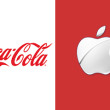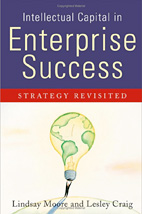For the first time in the 20 year history of brand valuations, Coca-Cola is not the #1 brand in the world! This year Apple Computer has taken their place, and Coca-Cola, while growing over prior year, and has fallen to #3 in the ranking. What does this tell us about the value of corporate assets?
Trade Secret Strategy
Trade secrets can often be used to protect company knowledge and invention in instances where patent protection is either not desirable or available. For example, when trade secrets are viewed as an alternative to patent protection they are commonly invoked in instances where the 20 year life of a patent isn’t deemed to be sufficient, or where the knowledge should never be made public (cf. the famous Coca-Cola recipe).
Managerial Competencies and the Enterprise Asset Base
Companies often fail to notice that their asset base has or is shifting from traditional tangible assets to an intangible asset base, and that concurrently, their approach to strategy and management must also change to effectively deploy and leverage the shifting asset mix.
Does Google’s Purchase of Motorola Suggest It Is Changing Its Strategy?
In a recent editorial in the Wall Street Journal one commentator on the world of business puzzled that Google would so violate the patent rights of their competitors with their Android mobile operating system. He mused incredulously, that Google seems to assume that their competitors in the smartphone market don’t have a right to exclude them from using their intellectual property.
Patenting Food Products and Manufacturing Processes
Many manufacturing companies overlook the opportunity to patent aspects of their products or specialized manufacturing processes. This is especially true in the natural products industries, where unusual ingredients are often mixed together and specialized production processes are increasingly required to make food products and dietary supplement products that are acceptable to consumers. In most natural product categories, it takes substantial innovation for manufacturers to be able to produce successful functional and natural food or supplement products.
The Truth About Licensing (PDF)
Not every company is in a position to practice classical carrot and stick style licensing. But that does not mean that licensing is not an option for every business, regardless of the intangible assets they own.
Surviving Financial Crisis with Structural Capital (PDF)
With an intellectual-asset audit, companies can often find Rembrandts in the attic. Ideas, patents, trademarks and/or infringements are often discovered that may help capitalize the enterprise that holds them.
Towards a Strategy of Valuing Patents as Intellectual Capital
Patents are a major force in the world economy, and one of only a few metrics commonly employed to gauge the tides of new ideas and innovation that are driving our economy. Even with the present declining rates of R&D investment, leading nations spend over $1 billion dollars each day generating intellectual property.
Intangible assets, intellectual capital or property? It does make a difference
In modern discussions regarding the value of intellectual property, terminology can often become confusing. To prevent misunderstanding, it’s important to differentiate between “intangible assets,” “intellectual capital” and “intellectual property.”
Branding Diamonds
During the 1990s, De Beers Consolidated Mines began the then seemingly unusual practice of “Branding” its diamonds. It began inscribing a small Brand Mark on its stones to differentiate its products within the commodity marketplace, and to ensure their worth against the inexorable declining value of non-oil commodities. The growing success of Brands, Branding and the strategies of Consumer Packaged Goods (CPG) Marketing are widely recognized within the global business community.






 As the knowledge-based economy expands, the companies and individuals that possess intangible intellectual assets, such as intellectual property, will need specialized expertise, strategic thinking, legal experience, and the wisdom necessary to manage intellectual assets.
As the knowledge-based economy expands, the companies and individuals that possess intangible intellectual assets, such as intellectual property, will need specialized expertise, strategic thinking, legal experience, and the wisdom necessary to manage intellectual assets.